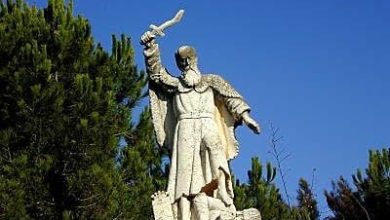By FRED KRONER
fred@mahometnews.com
I get it. I say it to myself. I tell it to others.
But I don’t really get it.
We live in a world where caution and fear are more prominent in our minds than empathy and concern.
Our school doors are locked. Our bank doors are locked. Interior doors in our newsrooms are locked.
We are encouraged to lock our homes, lock our car doors and shut the garage door.
Are we also locking our hearts to interactions that often led to compassion for others?
I get it.
We never know where evil is lurking, when the next attack might occur. We must proceed as if danger is imminent. Vigilance is of the essence.
There’s good reason.
Through Thursday, there have been 154 mass shootings in the United States thus far in 2018.
We can all agree that’s 154 too many, can’t we?
But look at what we have done.
The population of the United States is roughly 326.7 million.
The number of shooters is not even 1 percent of our population. It’s not even half of 1 percent. Or half of that number.
And yet, protections are in place to help alleviate concern of an instance that statistically is unlikely to happen.
Think about this: Our lives are being controlled by the criminal element, whether we want to acknowledge it or not.
Some of us now need two hands to count the number of decades we’ve spent on Earth.
We remember — and yes, yearn — for the time when trust, compassion and cooperation were prominent traits in our own minds as well as with neighbors, and strangers.
I grew up in a rural area, five miles north of Mahomet.
The closest neighbor was an elderly gentleman, Stanley Howe. On more than one occasion, he told me — and my parents — if we ever needed to borrow something, to come over and help ourselves.
Whether it was a rake, a hose nozzle or a wheelbarrow, he didn’t need to be home. He showed me around his garage, so I knew just where to find what we might need.
This was in the late 1960s.
Fast forward into the mid 1970s.
I drove to Colfax in January, 1975 for a high school boys’ basketball game. I didn’t pay attention to weather forecasts like I do these days.
If I could give advice now to my barely 20-year-old self then, it would be to hunker down in Colfax, stay with the family I knew and head home the next morning.
A snowstorm had started just prior to the game and — two hours later — roads were atrocious.
I was traveling on Route 165, near the “S” curve where you can head south into Saybrook and Bellflower or continue east and reach Sibley.
I made the first part of the “S” turn without (much) difficulty, but unable to see any road markings, turned back east too soon and wound up crossing a ditch and getting hopelessly stuck in a field.
Cell phones weren’t even a concept back then and there were no houses nearby where I could seek help. I turned on the blinkers and considered my options.
After what seemed like forever, but was probably closer to 10 minutes, headlights from an eastbound car came into view. Standing alone, with no cap, no boots and a light jacket, I must have looked desperate.
A young couple returning from a movie in Bloomington stopped and told me the storm would be getting worse before it would get better, and there would be no getting the car out that night. They offered me a ride into Sibley — which had no hotels or motels — and then asked me to spend the night at their residence.
I accepted.
By the time I was awake the next morning and served breakfast, they had already called a towing service and had the car parked in their driveway.
I had no money, but offered to mail them a check. They said it wouldn’t be necessary.
By 1981, I was a full-time sportswriter at The News-Gazette. I worked with a number of efficient athletic directors, but none were more cordial and congenial than Lee Cabutti, at Champaign Central.
At the start of each school year, he would mail me a list of the school’s head coaches, the times for their free periods at school and their room numbers.
It was an open invitation to visit whenever I had the opportunity. I learned where their offices — or classrooms — were located, and would routinely visit at my convenience.
No one ever — ever! — asked what I was doing or where I was going. Occasionally, I would be asked, “Do you know where you’re going?”
Cabutti’s office was on the southeast corner, just outside of Combes Gym. He wouldn’t always be there when I’d drop by, so I’d amuse myself with a magazine on his desk or by studying the assortment of photos he had on the wall. Sometimes, his delightful secretary, Lyla, was working and we’d talk.
I didn’t keep count of how many times I walked the halls at Central, usually passing through the gym, to reach Cabutti’s office, but I’m sure it was several dozen before he retired in 1985.
Central wasn’t an exception. There was free reign at Centennial, Urbana, Mahomet-Seymour and any other high school I went to. My colleagues were afforded the same privileges.
As that decade gave way to the 1990s, information was still readily available to sportswriters at virtually every area school.
If a traditional starter was in street clothes one night, the coach would willingly share the story.
“He didn’t pass his math test and is ineligible this week,” was one reason I heard.
If myself, a colleague or even a competitor wanted to reach the person who hit two home runs and pitched a shutout in last week’s baseball game, the coach gave us the phone number without hesitation.
When the Chicago Bulls had their magic run during the late 1990s, I secured playoff tickets to a home game for my teen-aged son and myself. Leaving Chicago Stadium, I took the wrong street (of course!) and eventually realized I had no idea where we were. We pulled into a corner gas station and I asked for directions since GPS had not yet been invented. The clerk provided perfect instructions. I left the car running and my son inside while I was in the store.
All of these stories share a common theme: Trust, a belief in the good and a confidence in others.
The question is not why we can’t go back to those days, but how we evolved (?) from that era to one where virtually every kind of information is considered private and to reach high school athletes, you’d better be prepared to leave your contact number with the coach to pass on and then be patient, hoping the teen-ager understands the importance of calling in a timely manner.
Don’t even think about visiting a coach in his office, unless he or she first meets you in the main office and escorts you.
Is our world a better place? Or, just more restrictive?
Although I haven’t tried it, I strongly believe that if I decided to attend a Little League game in the community I’ve called home for more than five decades, and saw a youngster who was impressive with his play, that it would be difficult to get his name without a bunch of questions about why I wanted the information.
Is there some devious motive, or could it just be the desire to subsequently follow this person’s exploits through the newspapers in future years and track his progress?
While I frequently rely on GPS, there are faults.
I was recently told by my system to go 800 feet and turn left. The problem was that at the end of 800 feet, there was no street to the left, only a black chain-link fence which extended a half-block each direction.
Suppose there had been someone walking on the sidewalk and I honked my horn to get their attention and ask a question. Would the end result be someone offering assistance or a call from that person to 911 reporting a possible predator in the area?
These are things I think about, especially during times I travel alone (without anyone to corroborate my plight) and encounter difficulties.
I get it.
The responses are conditioned into us now.
I imagine I would be leery if I were that person on the street being summoned, I would encourage my grandchildren to be leery.
But, how did we get here?
There are millions and millions of good folks throughout the U.S. and yet, what percentage do we view with suspicion and distrust?
I used to hitchhike and — based on nothing but good experiences — reciprocated by giving rides to hitchhikers I’d come across once I had my own vehicle.
And now?
When I was driving for Uber after my first retirement, I was always wondering what to expect from the next passenger, even though I had zero bad experiences in the more than 100 calls I answered.
The cost of safety can’t be measured simply by dollars and cents.
We’ve lost so much of an idyllic life — that once existed right here where you are reading this — but I fear we will never get it back.
And yes, I do get it.



